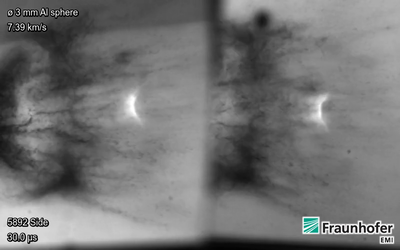Accept all cookies Accept only essential cookies See our Cookie Notice

About ESA
The European Space Agency (ESA) is Europe’s gateway to space. Its mission is to shape the development of Europe’s space capability and ensure that investment in space continues to deliver benefits to the citizens of Europe and the world.
Highlights
ESA - United space in Europe
This is ESA ESA facts Member States & Cooperating States Funding Director General Top management For Member State Delegations European vision European Space Policy ESA & EU Space Councils Responsibility & Sustainability Annual Report Calendar of meetings Corporate newsEstablishments & sites
ESA Headquarters ESA ESTEC ESA ESOC ESA ESRIN ESA EAC ESA ESAC Europe's Spaceport ESA ESEC ESA ECSAT Brussels Office Washington OfficeWorking with ESA
Business with ESA ESA Commercialisation Gateway Law at ESA Careers Cyber resilience at ESA IT at ESA Newsroom Partnerships Merchandising Licence Education Open Space Innovation Platform Integrity and Reporting Administrative Tribunal Health and SafetyMore about ESA
History ESA Historical Archives Exhibitions Publications Art & Culture ESA Merchandise Kids Diversity ESA Brand Centre ESA ChampionsSpace in Member States
Find out more about space activities in our 23 Member States, and understand how ESA works together with their national agencies, institutions and organisations.
Science & Exploration
Exploring our Solar System and unlocking the secrets of the Universe
Go to topicAstronauts
Missions
Juice Euclid Webb Solar Orbiter BepiColombo Gaia ExoMars Cheops Exoplanet missions More missionsActivities
International Space Station Orion service module Gateway Concordia Caves & Pangaea BenefitsLatest
Space Safety
Protecting life and infrastructure on Earth and in orbit
Go to topicAsteroids
Asteroids and Planetary Defence Asteroid danger explained Flyeye telescope: asteroid detection Hera mission: asteroid deflection Near-Earth Object Coordination CentreSpace junk
About space debris Space debris by the numbers Space Environment Report In space refuelling, refurbishing and removingSafety from space
Clean Space ecodesign Zero Debris Technologies Space for Earth Supporting Sustainable DevelopmentLatest
Applications
Using space to benefit citizens and meet future challenges on Earth
Go to topicObserving the Earth
Observing the Earth Future EO Copernicus Meteorology Space for our climate Satellite missionsCommercialisation
ESA Commercialisation Gateway Open Space Innovation Platform Business Incubation ESA Space SolutionsEnabling & Support
Making space accessible and developing the technologies for the future
Go to topicBuilding missions
Space Engineering and Technology Test centre Laboratories Concurrent Design Facility Preparing for the future Shaping the Future Discovery and Preparation Advanced Concepts TeamSpace transportation
Space Transportation Ariane Vega Space Rider Future space transportation Boost! Europe's Spaceport Launches from Europe's Spaceport from 2012
Hypervelocity impact testing
Thank you for liking
You have already liked this page, you can only like it once!
What looks like a mushroom cloud turned sideways is actually the instant an 2.8 mm-diameter aluminium bullet moving at 7 km/s pierces a spacecraft shield, captured by a high-speed camera.
“We used a gas gun at Germany’s Fraunhofer Institute for High-Speed Dynamics to test a novel material being considered for shielding spacecraft against space debris,” explains ESA researcher Benoit Bonvoisin.
“Our project has been looking into various kinds of ‘fibre metal laminates’ produced for us by GTM Structures, which are several thin metal layers bonded together with composite material.”
Growing levels of orbital debris pose increasing risks to all kinds of Earth-orbiting missions, adds engineer Andreas Tesch: “Such debris can be very damaging because of their high impact speeds of multiple kilometres per second.
“Larger pieces of debris can at least be tracked so that large spacecraft such as the International Space Station can move out of the way, but pieces smaller than 1 cm are hard to spot using radar – and smaller satellites have in general fewer opportunities to avoid collision.”
In some orbital regions small natural meteoroids can also pose a threat, in particular during intense seasonal meteoroid streams such as the Leonids.
To avoid damage from whatever source, protection is needed against small debris, typically consisting of one or more shields. Often used is the ‘Whipple shield’ – originally devised to guard against comet dust – with multiple layers separated by 10–30 cm.
The project, supported through ESA’s General Support Technology Programme, which prepares promising technology for spaceflight, looked at the efficiency of fibre metal laminates compared to current aluminium shields.
This still from the video shows the point after which the solid aluminium bullet has broken apart into a cloud of fragments and vapour, which becomes easier for the following layers to capture or deflect.
“The next step would be to perform in-orbit demonstration in a CubeSat, to assess the efficiency of these FMLs in the orbital environment,” concludes Benoit.
-
CREDIT
Fraunhofer Institute for High-Speed Dynamics -
LICENCE
ESA Standard Licence

Hypervelocity impact testing

ATV shielding after impact test

Hypervelocity impact test damage

Giotto Whipple shield















 Germany
Germany
 Austria
Austria
 Belgium
Belgium
 Denmark
Denmark
 Spain
Spain
 Estonia
Estonia
 Finland
Finland
 France
France
 Greece
Greece
 Hungary
Hungary
 Ireland
Ireland
 Italy
Italy
 Luxembourg
Luxembourg
 Norway
Norway
 The Netherlands
The Netherlands
 Poland
Poland
 Portugal
Portugal
 Czechia
Czechia
 Romania
Romania
 United Kingdom
United Kingdom
 Slovenia
Slovenia
 Sweden
Sweden
 Switzerland
Switzerland
























